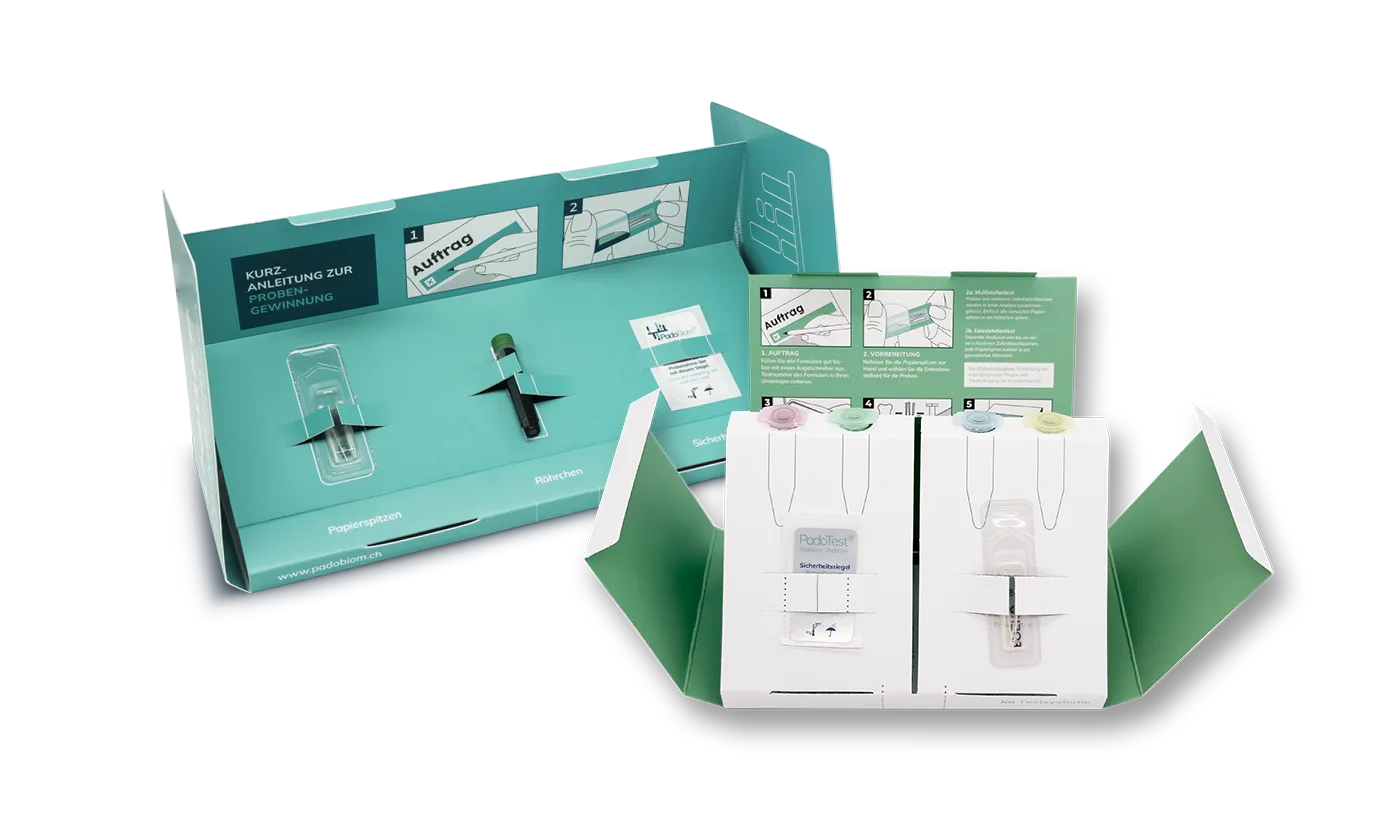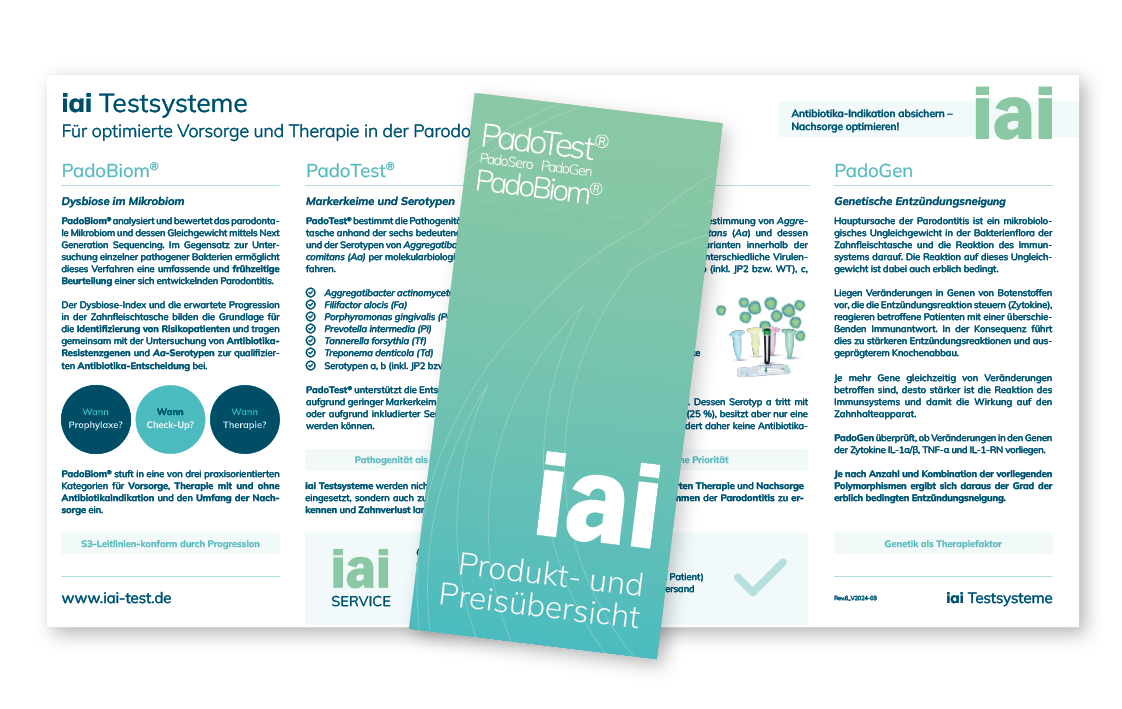

We are pleased to inform you that, as of July 1, 2025, the MiP Periodontitis Diagnostics (PET-Test) will be taken over by ParoX GmbH and integrated into their iai test systems. From that date onward, all analyses will be conducted by ParoX GmbH, and you will benefit from the enhanced periodontitis diagnostics of PadoTest® and the microbiome analysis PadoBiom®.
Your sample submissions with the PET sampling kit will continue to be processed
Instead of the PET result report, you will receive the extended PadoTest® result report including Aa serotyping for your therapy recommendation and antibiotic indication
The prices remain the same (for submissions with PET order form)
For new orders, you will receive sampling kits from the iai test systems - The sampling method remains the same (paper tips from the gingival pocket)
With PadoBiom® it is now possible to analyze the oral microbiome including antibiotic resistance genes
Results/invoice retrieval by post, e-mail and online at www.iai-test.de
If your samples are already on their way or sampling is already scheduled, you do not need to do anything - you will receive your result as described above. For all future submissions:


ParoX GmbH
Deutscher Platz 5
04103 Leipzig, Germany
Free hotline:
00800 32 32 62 62
Tel.: +49 (0)341 149 59 19
Fax.: +49 (0)341 149 59 59
E-mail: This email address is being protected from spambots. You need JavaScript enabled to view it.
Please use this from now on for all enquiries/orders, including previous orders (results/invoices).